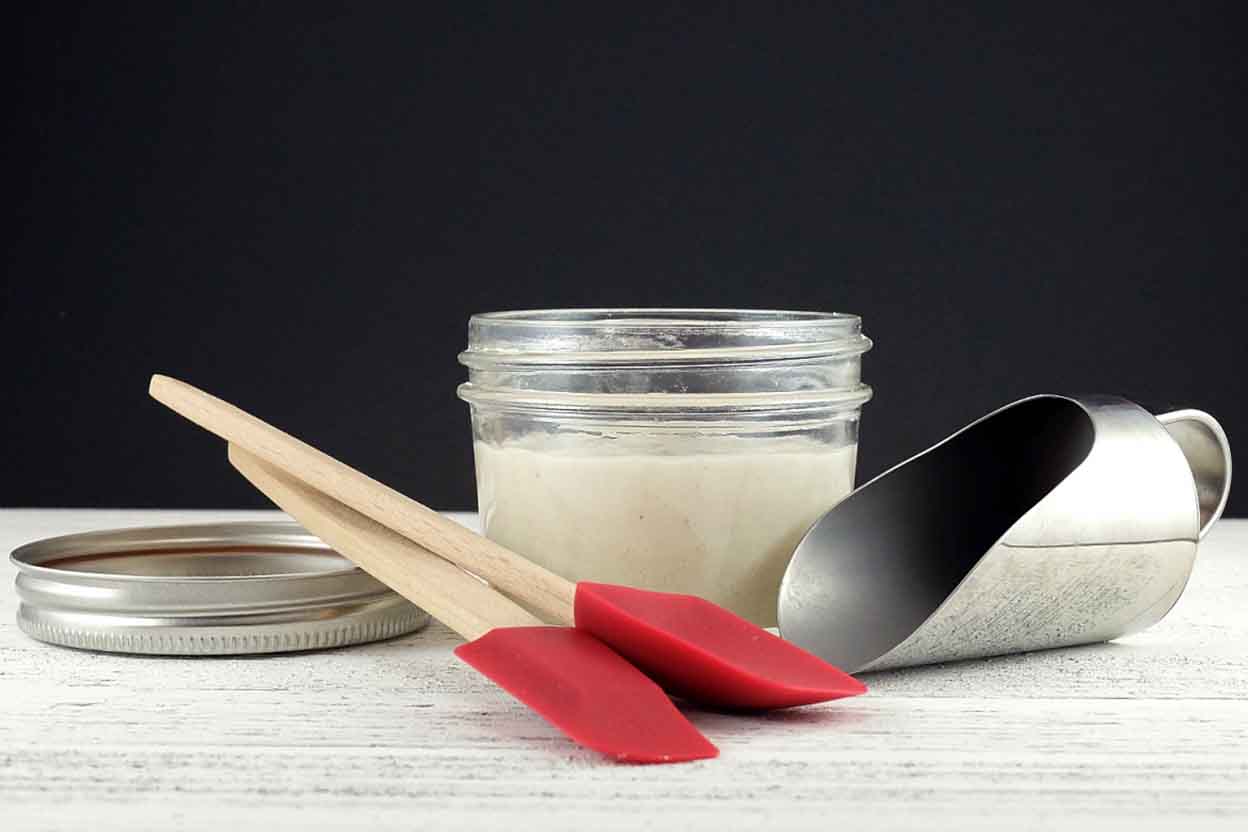A Smaller Sourdough Starter
4.3
(6)
Your folders
Your folders
Prep Time: 10 minutes
Total: 10 minutes
Servings: 2
Author : King Arthur Flour

Ingredients
Export 2 ingredients for grocery delivery
Instructions
This recipe begins with your own existing starter. If you're not currently tending one, here's a recipe for sourdough starter. , Stir your ripe (fed) starter and discard all but 20g (1 rounded tablespoon). Note: Having two identical 8-ounce wide-mouth jars will come in handy here; you can tare the weight of the empty jar, then remove all but 20g of starter from the starter jar. Or, if you're measuring by volume, you can remove 1 tablespoon starter from the original jar and add it to the second jar. , To store your starter at room temperature (about 70°F): Add the water and flour, stir, and cover. Feed the starter every 12 hours, or once in the morning and once in the evening., To store your starter in the refrigerator: Add the water and flour, stir, and cover. Feed your starter at least once a week when storing it in the refrigerator. Allow the starter to ferment at room temperature (about 70°F) for four hours before returning it to the refrigerator; this gives the yeast and bacteria a chance to warm up and become active., To ready your starter for baking: Preparing to bake involves a series of feedings/builds that serves to increase both the quantity and the activity level of your starter. Feed/build your starter until you have enough for your recipe plus 20g left over to feed and maintain. See "tips," below, for an example of how to build your starter for a recipe calling for 1 cup (8 ounces, 227g) ripe sourdough starter.